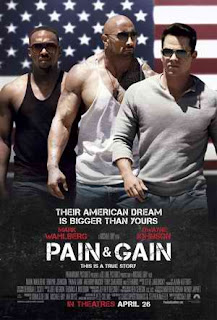3 stars (out of four)
The best moments in Frances Ha, a light and breezy new film directed by Noah Baumbach and written by
Baumbach and Greta Gerwig (who also plays the titular Frances), are the little
ones – snatches of overheard conversations, the offhanded reactions and
interactions of its young and cheerful characters. When Frances Ha works, it feels as though Baumbach and Gerwig are
skipping stones across the film’s shimmery surface. In one particularly
jubilant scene, as she prances and pirouettes down several blocks of Manhattan
sidewalk, Gerwig evens seems to mimic that exact motion.
The movie, which recounts a year or so in the life of the
hopelessly quirky twenty-seven-year-old Frances, an understudy in a dance
company, only sputters when it slows down and grasps for something a little
weightier. An early scene, in which Frances and her boyfriend (Michael Esper)
break up, has a few funny lines but mostly feels assembled from similar scenes
we remember from a hundred other movies and sitcom episodes.
But then there’s a scene like the one when Frances and Miles
(Adam Driver), a friend-of-a-friend she meets at a party, go on a first date.
Their awkward and halting dialogue has a kind of screwball grace to it, and
Frances’s ensuing mad dash to an ATM is gleefully slapstick. Driver, who plays
a much gentler version of the self-absorbed charmer he plays on HBO’s Girls, has just the right rhythms to parry with Greta
Gerwig, whose wonderfully flighty Frances is always cutting herself off
mid-thought or rambling on about nothing. I would love to see a longer, more
traditional romantic comedy between the two.
But though the tribulations of dating in the city as a
twentysomething take up a considerable amount of focus in the conversations and
musings of the movie’s characters, the romance at the center of Frances Ha is not a heterosexual one. The break-up between
Frances and her boyfriend comes when he invites her to move in with her. She
can’t, she explains. She has to continue living with her current roommate and
best friend Sophie (Mickey Summer) at least until the end of their lease. And
besides, they’re probably going to renew the lease after that, so it’s kind of
impossible.
More than once Frances and Sophie joke that they are like an
old lesbian couple who don’t have sex anymore, but unlike the guys who are in
man-love with each other in, say, a Judd Apatow production, these young women do
not feel the need to be self-consciously and kiddingly homophobic. They are
open and honest about their affection for one another, lying on each other’s
laps and occasionally sharing a snuggle in bed. They say “I love you,” not “I
love you, girl.”
This is refreshing to an extent but mostly just reflects the
gender difference in attitudes toward same-sex friendship. And while Frances
Ha admirably works to provide counterbalance to the
increasingly unbearable number of bromances in movies today, its girlmance
isn’t terribly different. It’s a plot device to keep its stars together rather
than in the arms of their respective boyfriends and fiancés who just don’t get
them the way they do. The scenes between Frances and Sophie are undeniably
sincere but also familiar. (Later, Frances’s flirtation with a
new roommate and platonic friend Benji (Michael Zegen) has a more fresh
chemistry.)
Frances Ha is more
giddily free-spirited when Frances breaks free from her second half and makes a
nice, cute mess of her life. Greta Gerwig’s performance is sharp and clever in
the way it pokes fun at the immaturity of Frances while also embracing and
cherishing the character’s innocence. Aided by cinematographer Sam Levy, who
paints the film in nostalgic black-and-white, the twenty-nine-year-old Gerwig
seems to be looking back on recently passed years of her life with a knowing
smile.
Noah Baumbach treats the material with this same warm,
backward-looking affection. Frances Ha
has a candidness that is fun and funny, and jazzy style that skips from one
scene to the next. Baumbach pitches the film’s tone somewhere between Girls and Annie Hall-era Woody Allen, though without ever reaching the heights of either. Frances
Ha does not have enough depth or complexity
to be a statement about life in your twenties rather than just a fleeting
snapshot of it. Baumbach and Gerwig are content to simply cast out a net and
reel in authentic moments. They don’t catch many keepers but you can feel that
they still had a great time fishing.
- Steve Avigliano, 5/25/13





